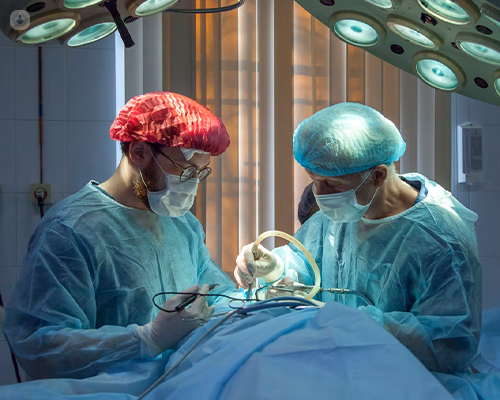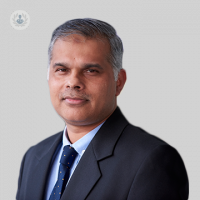What is off-pump coronary artery bypass grafting (CABG)?
Autore:In our latest article, leading London-based cardiac surgeon, Mr Shahzad Raja, provides us with an expert and insightful overview of both on-pump and off-pump coronary artery bypass grafting procedures, detailing the main differences between the two.

What is off-pump coronary artery bypass grafting (CABG)?
It is a surgical technique in which bypass surgery is performed without the assistance of the heart lung machine.
What is the difference between off-pump and on-pump?
On-pump coronary artery bypass grafting is a conventional way of performing the bypass operation. In this particular technique, we connect the patient to the heart lung machine by putting pipes into the various chambers of the heart. The blood then circulates in artificial tubing, and the heart is arrested during the course of the operation.
During this procedure, holes are made in the aorta as well as into the right atrium for the heart lung machine to be connected. This can, unfortunately, increase the risk of stroke during the procedure.
To mitigate these complications, a technique called off-pump coronary artery bypass grafting is utilised. In this technique, the procedure is performed with a beating heart, and so the risk of stroke is minimised.
How long does off-pump coronary artery bypass grafting take?
It usually takes anywhere between three to three and a half hours. In general, off-pump coronary artery bypass grafting doesn’t take as much time as the on-pump coronary artery bypass grafting, primarily due to the fact that the patient is not connected to the heart lung machine. An off-pump operation would generally last around an hour shorter than an on-pump operation.
How long does coronary artery bypass grafting recovery take, and are there any side effects?
Both on-pump and off-pump procedures are very safe. The standard procedure would carry a risk of roughly one to two per cent. Both operations do have the risk of stroke, kidney damage, bleeding, and an irregular heartbeat. These complications, if experienced, would extend the patient’s stay in the hospital.
However, if the patient does not experience any complications, a patient will typically stay in hospital for around five days minimum after the operation.
What is the success rate of coronary artery bypass grafting, and are people likely to need a repeat procedure in the future?
It is a very successful procedure if offered by and performed by experts. The success rate is somewhere between 98 to 99 per cent. Patients can enjoy up to 15 years of a good quality of life before requiring another coronary artery bypass grafting procedure.
Mr Shahzad Raja is an extremely well-regarded cardiac surgeon who specialises in performing both on-pump and off-pump coronary artery bypass grafting procedures. Contact him today via his Top Doctors profile to book an appointment with him.


